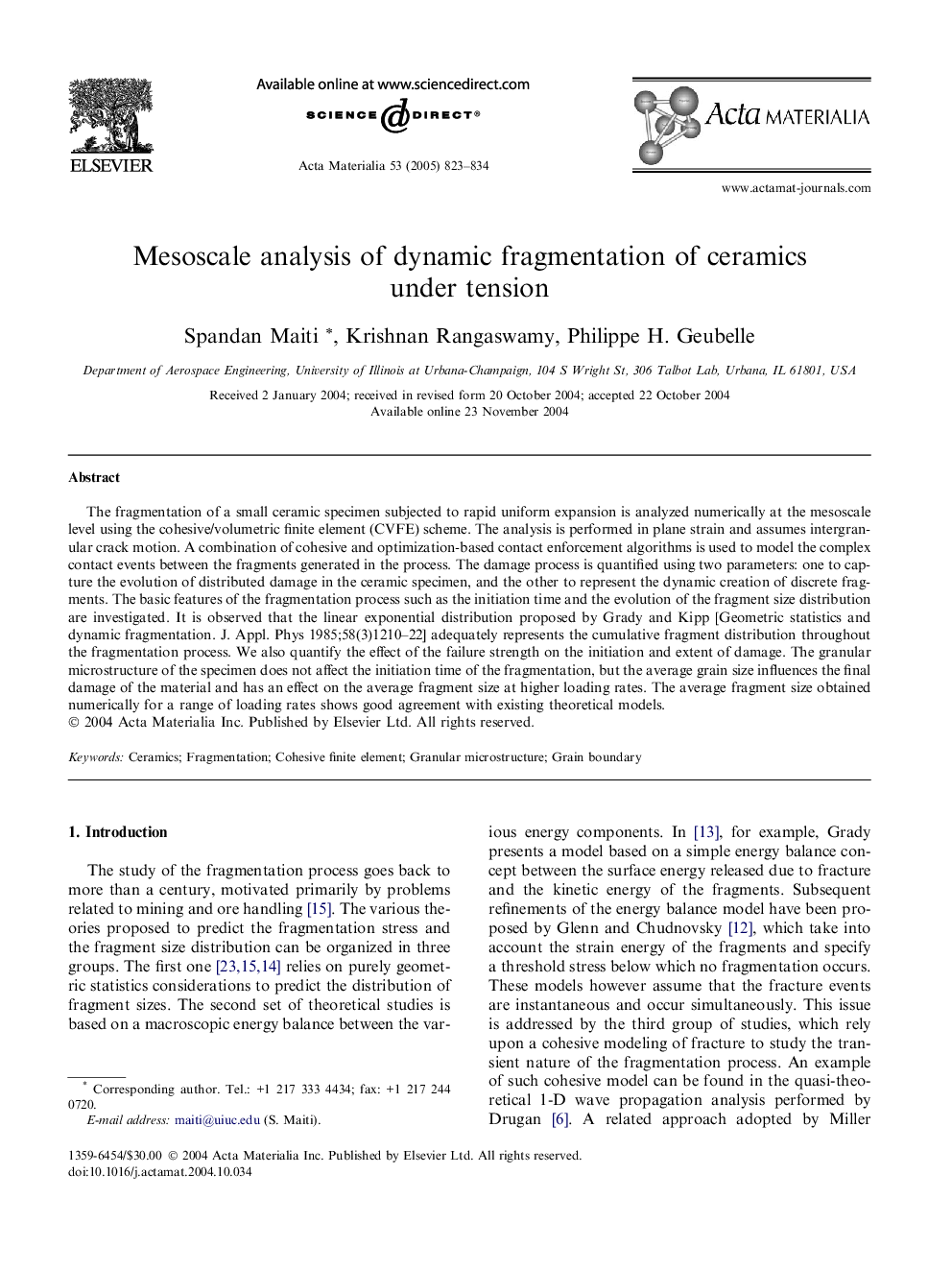| Article ID | Journal | Published Year | Pages | File Type |
|---|---|---|---|---|
| 10621219 | Acta Materialia | 2005 | 12 Pages |
Abstract
The fragmentation of a small ceramic specimen subjected to rapid uniform expansion is analyzed numerically at the mesoscale level using the cohesive/volumetric finite element (CVFE) scheme. The analysis is performed in plane strain and assumes intergranular crack motion. A combination of cohesive and optimization-based contact enforcement algorithms is used to model the complex contact events between the fragments generated in the process. The damage process is quantified using two parameters: one to capture the evolution of distributed damage in the ceramic specimen, and the other to represent the dynamic creation of discrete fragments. The basic features of the fragmentation process such as the initiation time and the evolution of the fragment size distribution are investigated. It is observed that the linear exponential distribution proposed by Grady and Kipp [Geometric statistics and dynamic fragmentation. J. Appl. Phys 1985;58(3)1210-22] adequately represents the cumulative fragment distribution throughout the fragmentation process. We also quantify the effect of the failure strength on the initiation and extent of damage. The granular microstructure of the specimen does not affect the initiation time of the fragmentation, but the average grain size influences the final damage of the material and has an effect on the average fragment size at higher loading rates. The average fragment size obtained numerically for a range of loading rates shows good agreement with existing theoretical models.
Keywords
Related Topics
Physical Sciences and Engineering
Materials Science
Ceramics and Composites
Authors
Spandan Maiti, Krishnan Rangaswamy, Philippe H. Geubelle,
